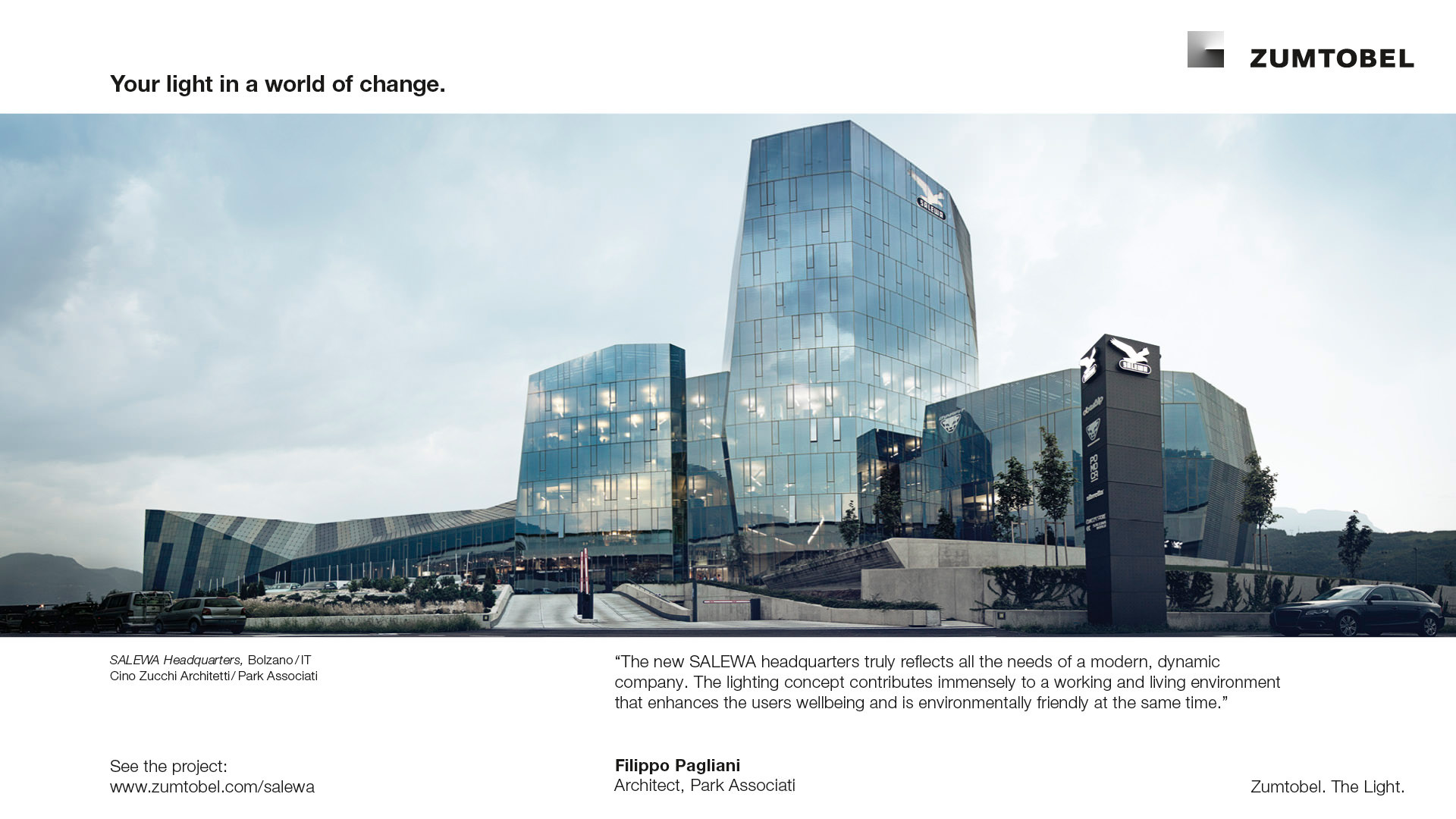-
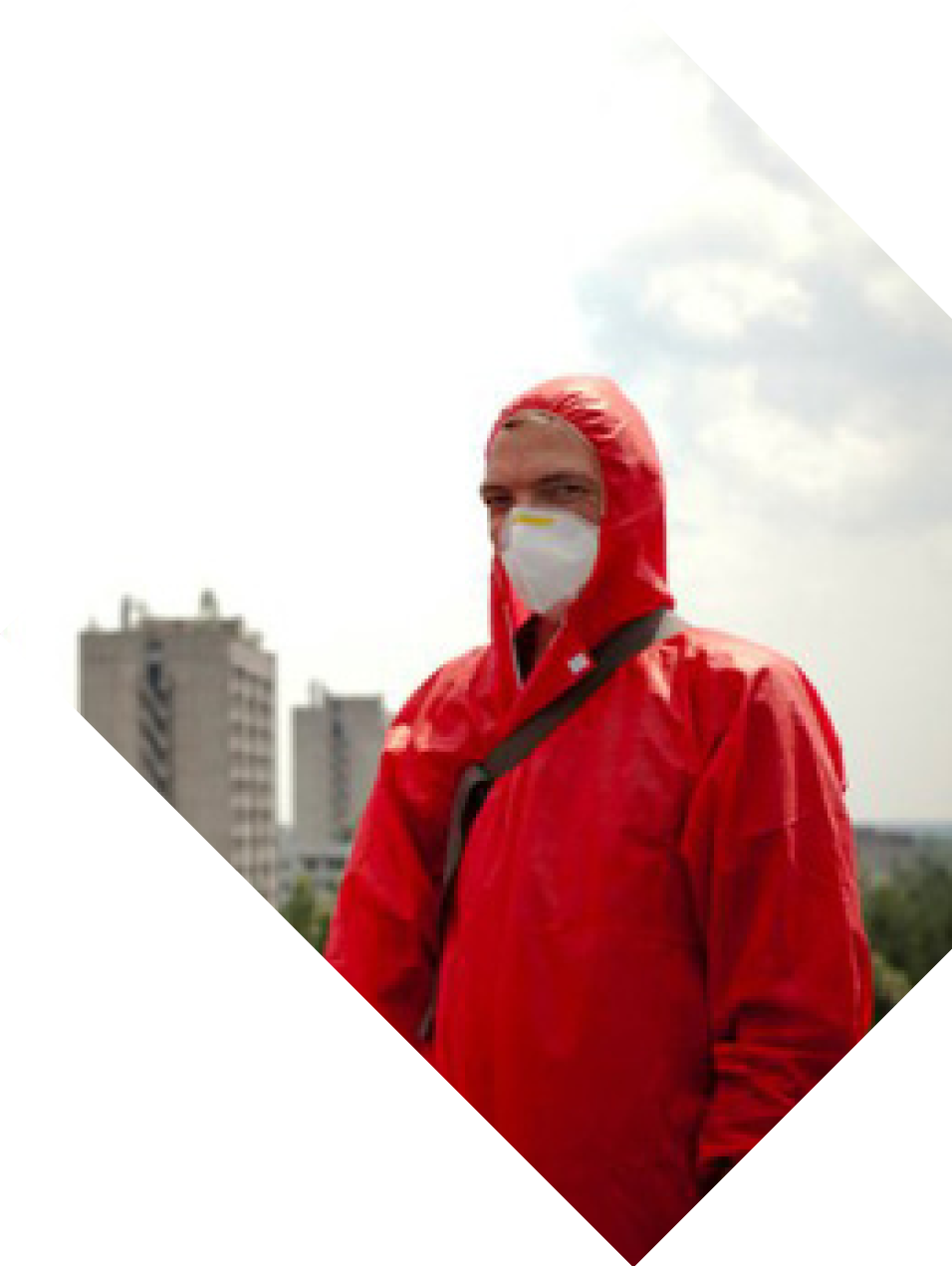
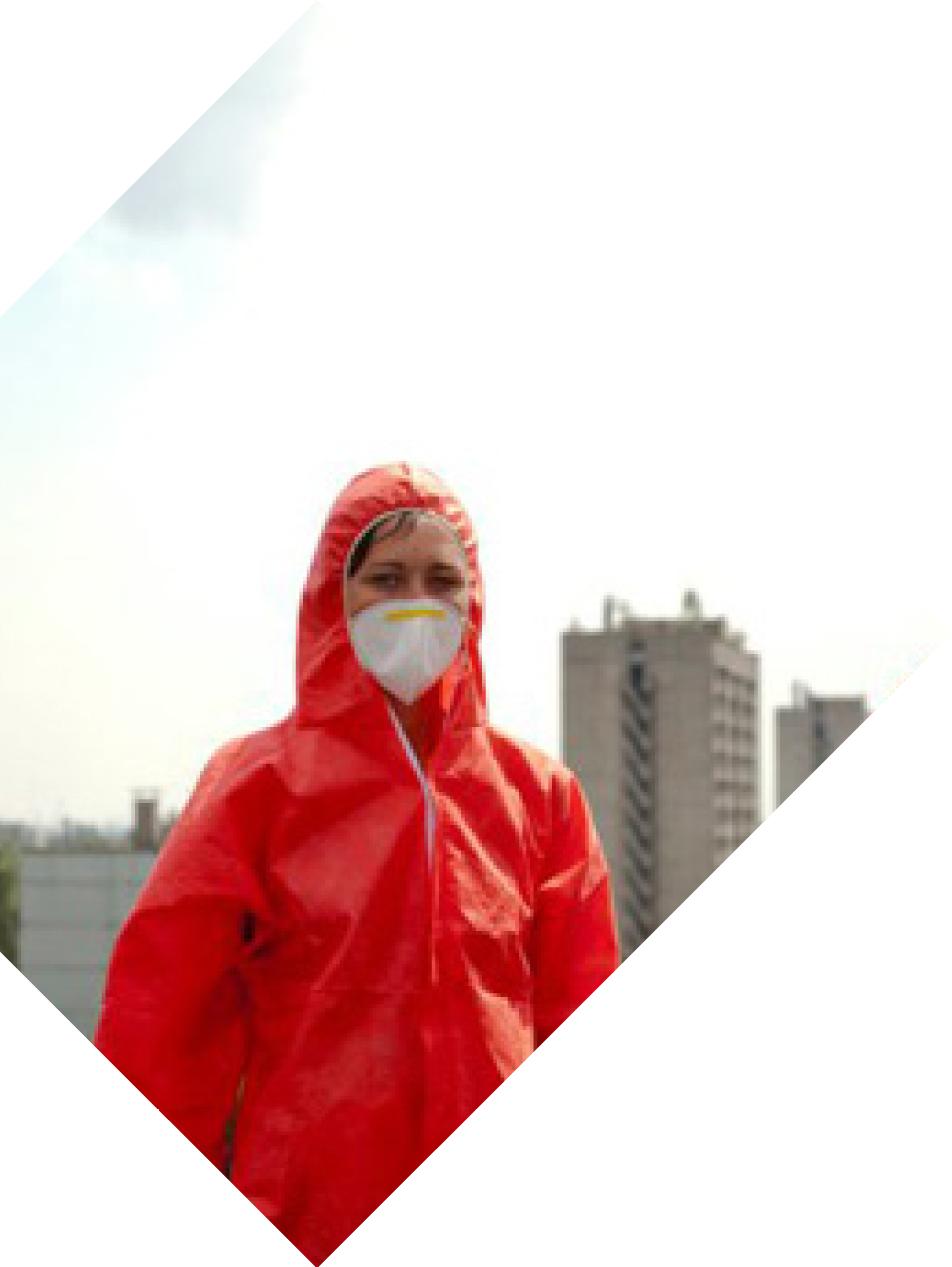
U n d e r
Tomorrow's
SkyThe
speculative
futures of Liam YoungText: Julia Albani
Kate Davis and Liam Young, leaders of the Unknown Fields Division, standing on a rooftop in Chernobyl. (Photo: Johnathan Gales)
-
In 1979, Kenneth Gatland and David Jefferis published the Usborne Book of the Future – A Trip in time to the year 2000 and beyond, a chronicle of the future with flying cars, space ships, moon beams, robots. The visions within were readings of the culture and time in which they were written rather than prophetic images of tomorrow, creating a surprisingly encyclopedic insight into the dreams and anxieties of the 1970s and 80s.
In the same year that the book came out, Liam Young was born in Australia. Usborne would later become his favorite book, and today, conjecturing yesterday’s futures likewise defines his agenda. Prediction of the future is only one side effect of science fiction, says Young, since it’s really a mode of exploring the present. Young imagines future worlds as a means to understand the present anew. To him, the future is constantly being created. It’s a verb, not a noun.
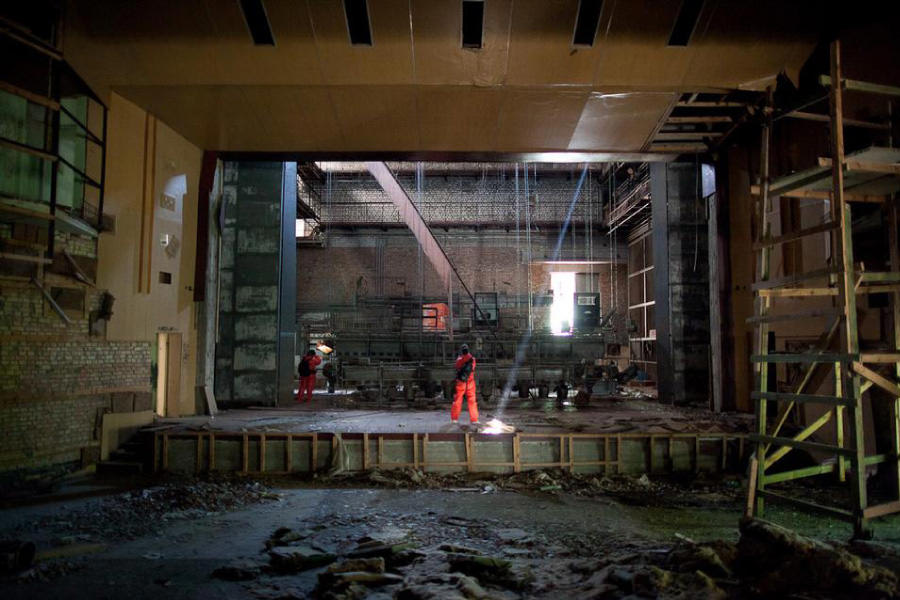
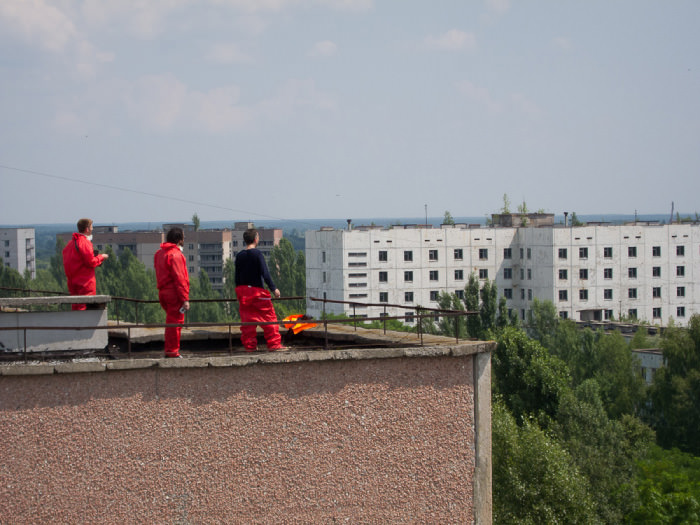
Unknown Fields is a nomadic studio organizing annual expeditions “to the ends of the earth exploring forgotten landscapes, alien terrains and obsolete ecologies.” In 2011 they explored the Chernobyl Exclusion Zone. (Photos: Neil Berret)
-
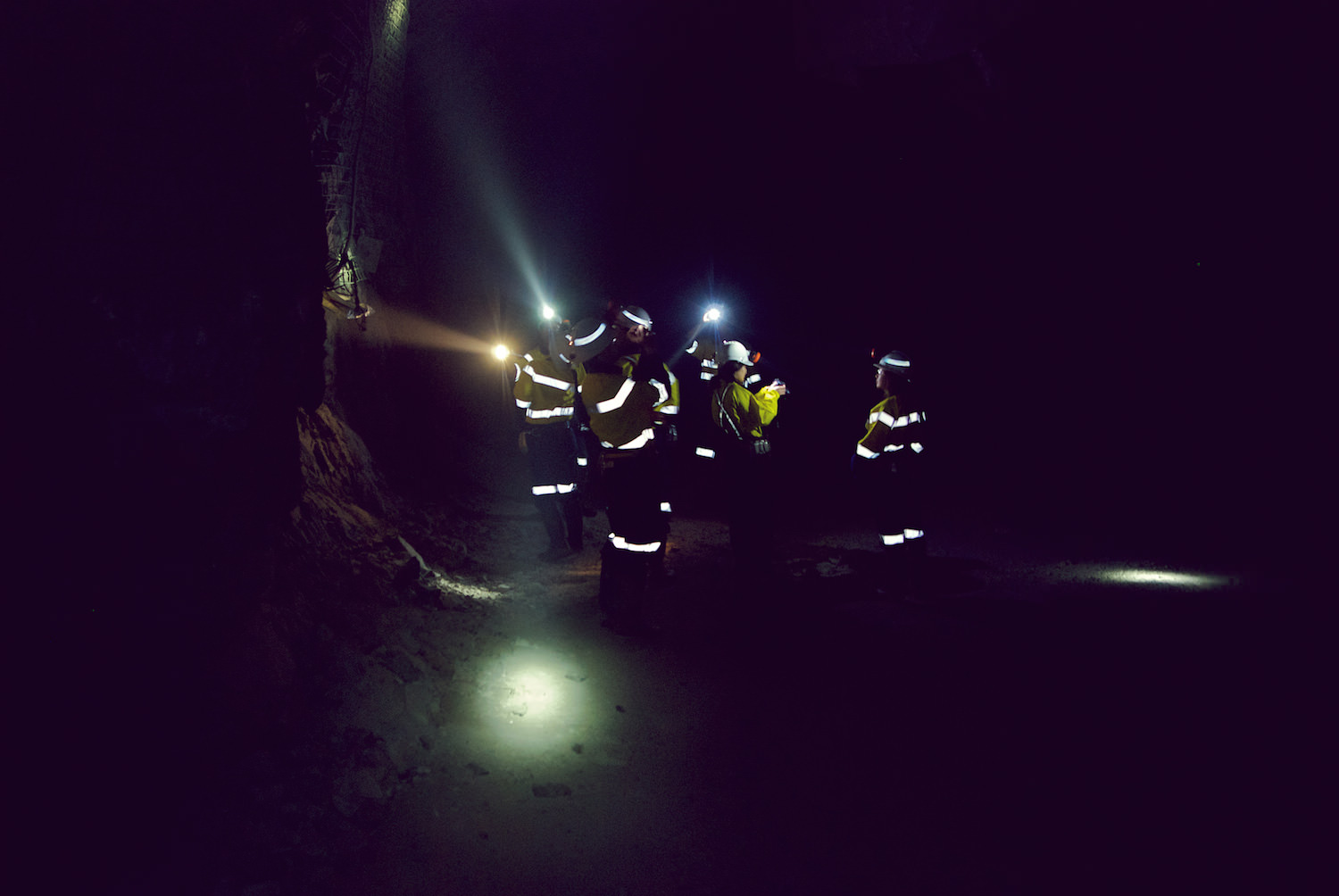 This picture sees the Unknown Fields Division one kilometer below the ground exploring an Australian gold mine in 2010. (Photo: Oliviu Lugojan-Ghenciu)
This picture sees the Unknown Fields Division one kilometer below the ground exploring an Australian gold mine in 2010. (Photo: Oliviu Lugojan-Ghenciu) -
...and in the winter of 2011, Young, Davis and their students travelled to the Arctic Ocean in Alaska, inspired by a Kurt Vonnegut quote: “I want to stay as close to the edge as I can without going over. Out on the edge you see all kinds of things you can't see from the center.” (Photo: Christina Seely)
-
Trained as an architect, Young worked for a number of high-profile offices including Zaha Hadid Architects and LAB Architecture Studio, before escaping the system to become an independent urbanist, futurist, designer, critic, and curator. In 2008 he founded the think-tank Tomorrow’s Thoughts Today. He is based in London, when not on expeditions exploring unreal and forgotten landscapes, alien terrains, and obsolete ecologies. He fights against the torrent of professional conservatism in the urban and regeneration industries and seeks to revive dormant ideas as new sources of inspiration from para-disciplinary fields. These pursuits often lead to reappraisals of dysfunctional systems, engaging aspects of pop, pulp and the vulgar.
Together with the designer, writer, and educator Kate Davies, Young navigates as The Unknown Fields Division, a nomadic design studio that maps complex and contradictory realities of the present as a site of strange and extraordinary futures, either through physical expeditions or the design of speculative projects. Young has witnessed the climate change catastrophes of Alaska to the arctic circle to the oil fields of the Amazon. He’s led an expedition from Chernobyl Exclusion Zone through the Ukraine and the oil fields of Azerbaijan to the rocket launch pad of Kazakhstan’s Baikonur Cosmodrone. In the shadows of nuclear disaster, he surveyed the irradiated wilderness and bore witness to a sobering apocalyptic vision of the past.
By the end of this year, Young and his students will make it to the Mayan ruins to await the end of the world. In this expedition, he will ponder the rise and fall of cities and civilizations, investigating the cultural and technological infrastructures that underpin their prosperity and collapse. Though admittedly seduced by the sensationalism of the apocalypse, he is sure that 21 December, 2012 will be just another day. What he finds interesting about the apocalypse is the way that its myths have been engineered by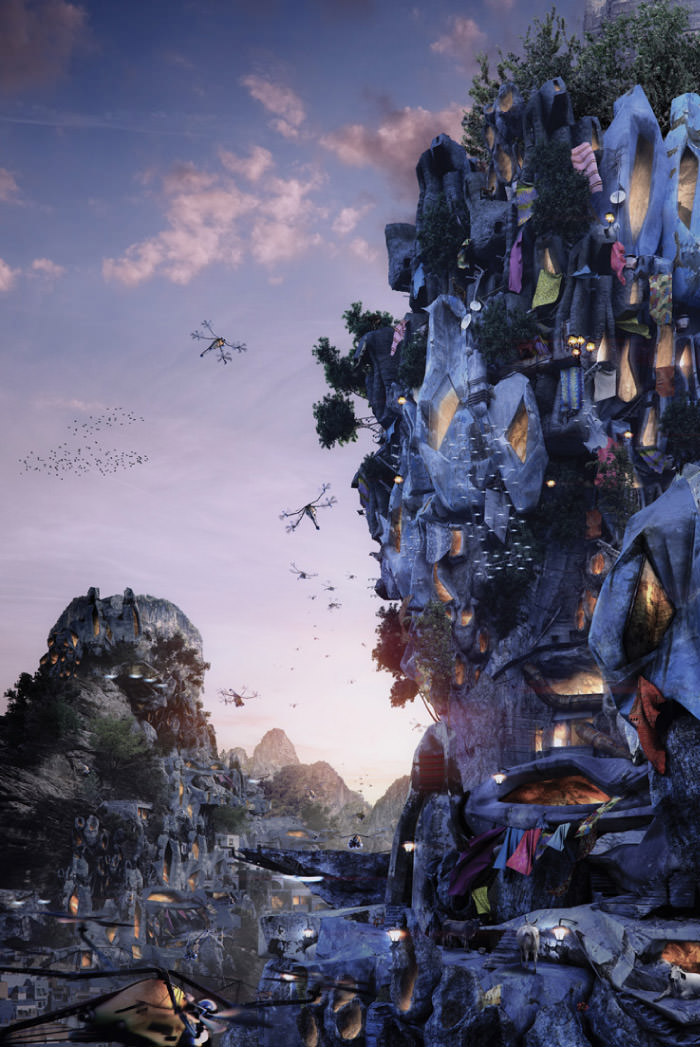 Under Tomorrow’s Sky is a “speculative” city model developed by Liam Young together with a think-tank of scientists, technologists, authors, and illustrators.
Under Tomorrow’s Sky is a “speculative” city model developed by Liam Young together with a think-tank of scientists, technologists, authors, and illustrators. -
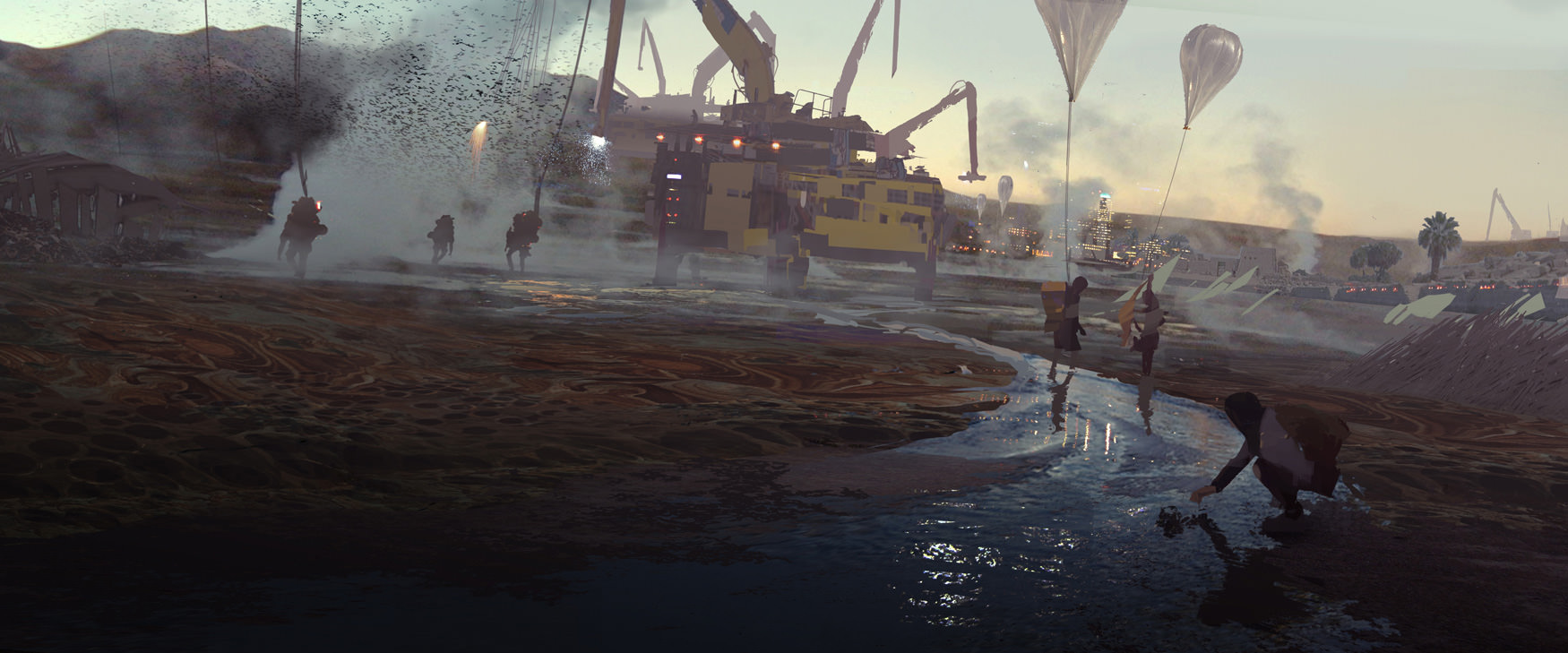
Early in the design process, artist Hovig Alahaidoyan translated fragments of the think-tank’s discussions into a set of sketches: here, he depicted how the city’s inhabitants scavenge on the mudflats in the shadow of heavy industry.
-
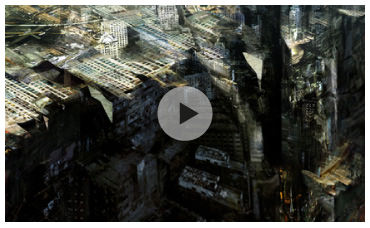
Under Tomorrow’s Sky ranges from utopia to dystopia. This picture is part of a series by artist Daniel Dociu’s series ‘Urban Tectonic’ where he shows his visions of this future city.
-
media apparatuses – hyped up, for example, to support the promotion of the John Cusack movie 2012. The way cultural fictions are designed is fascinating and relevant for speculative architects. Although fabrications, these fictions have real effects.
Young, who was named in 2010 by Blueprint magazine one of 25 people who will change architecture and design, explores fantastic, perverse and underrated architectures by inviting mad scientists, literate astronauts, digital poets, speculative gamers, mavericks, and luminaries to collectively develop imaginary places and narratives. This spring, as part of his program Under Tomorrow’s Sky, he initiated a design project for a speculative city with a group of scientists, technologists, authors, and illustrators like Bruce Sterling, Rachel Armstrong, Geoff Manaugh, and Nicola Twilley. The exhibition featured a room-sized model along with behind-the-scenes work from the think-tank. In online and live discussions held over several
months, the invited practitioners came together to design this future city and discuss the possibilities of emerging biologies and technologies. The result was not familiar dystopian visions of the future, but one of post-capitalist urbanity filled with optimism and joy. The model was used as a backdrop for animated films and a stage set for a collection of stories and illustrations, and audiences could contribute their own narratives to the city through a series of workshops.
Under Tomorrow’s Sky gave birth to a work called Electronic Countermeasures, which expresses the fact that today we are often closer to our virtual communities than we are to our real neighbors. Young designed and manufactured a flock of modified quadrocopters that form their own place specific, local, wi-fi community and pirated file-sharing network. As part of Eindhoven’s GLOW Festival 2011, the fleet of drones performed a balletic aerial choreography as they waited for passers-by to interact with them.
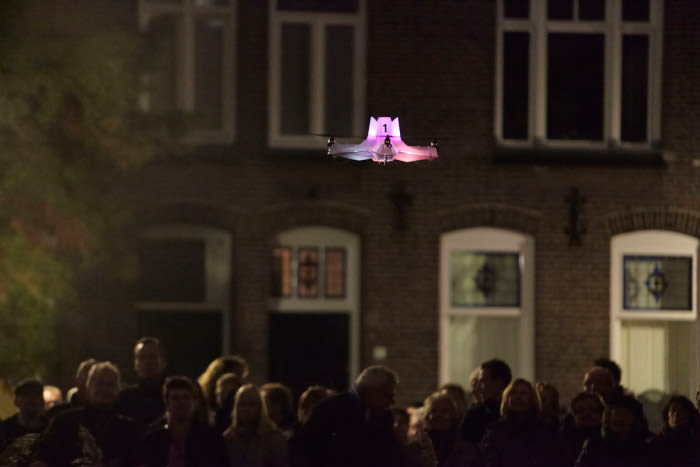 Electronic Countermeasures in 2011, saw a fleet of interactive drones hovering around Eindhoven in the Netherlands.
Electronic Countermeasures in 2011, saw a fleet of interactive drones hovering around Eindhoven in the Netherlands.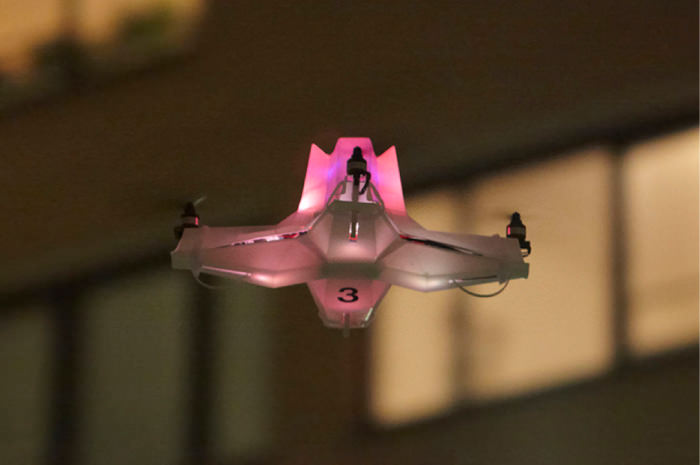
-
The more people interacted with the drones the more excited and illuminated the flock became, like living mobile infrastructures with endearing behaviors. For Young, technology and nature are not in opposition to one another; and he invites us to rethink default conservationist positions and to explore design strategies for a new kind of technological wilderness.
In his recent Singing Sentinels exhibition and the accompanying performance “Silent Spring: A Climate Change Acceleration,” Young released 80 live canaries into the New Order exhibition space at the Mediamatic Gallery in Amsterdam. As a “pollution DJ,” he flooded the gallery with CO2, altering the air mixture to replicate predicted atmospheric changes of the next 100 years. The birds became an ecological warning system, living in the space and providing audible feedback on the state of the atmosphere. One could hear the canary song subtly shift and eventually silence, as the birds sang an elegy
 If you like animals maybe you shouldn’t read this: the exhibition/performance “Singing Sentinels” in Amsterdam featured 80 live canaries and a gas cylinder...
If you like animals maybe you shouldn’t read this: the exhibition/performance “Singing Sentinels” in Amsterdam featured 80 live canaries and a gas cylinder... -
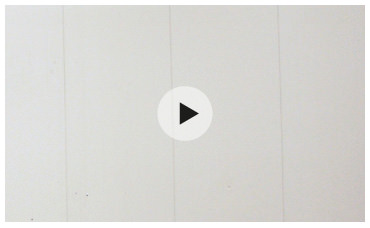
Liam Young, wearing a gas mask and calling himself a “pollution DJ”, flooded the space with more and more CO2, creating the atmospheric conditions that are predicted for Earth in 2100. Watch the video.
-
for our changing planet. With Geoff Manaugh and Tim Maly, Young published the book A Field Guide to Singing Sentinels: A Birdwatcher’s Companion, with illustrations from comic illustrator Paul Duffield.
Writing the future’s history, Young’s contribution as an explorer and visionary is not through predictions but through critical engagement of contemporary issues at stake. To him, architecture is the link between the cultural, environmental, political, and technological, synthesizing complex factors to stage brave new scenarios today. We can only speculate as to what he’ll come back with from Central America after the apocalypse. Most probably it will be something we haven’t seen before.

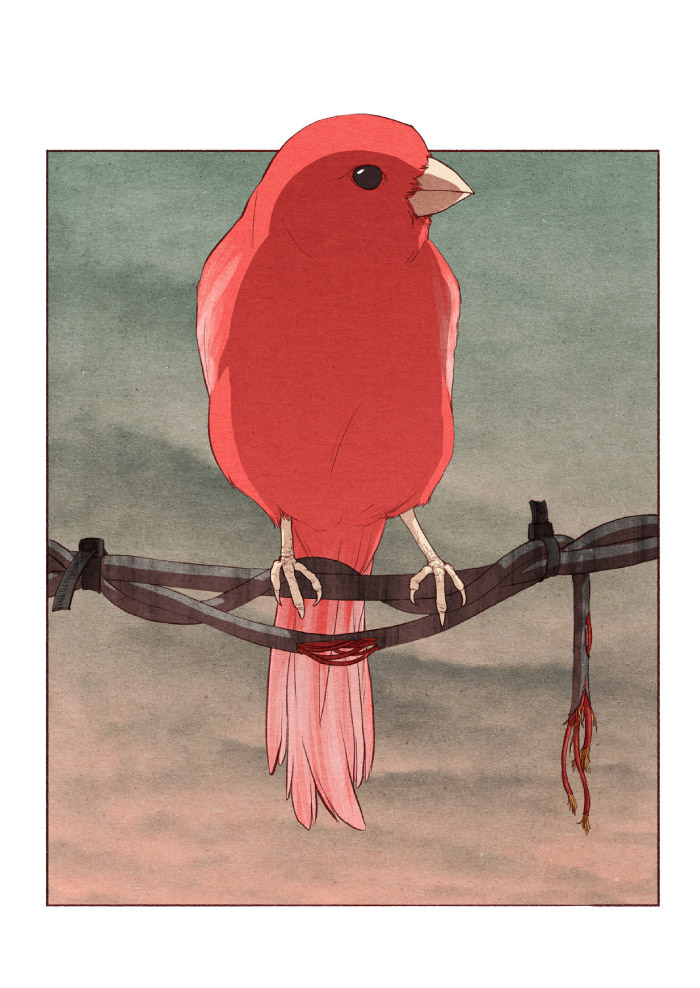
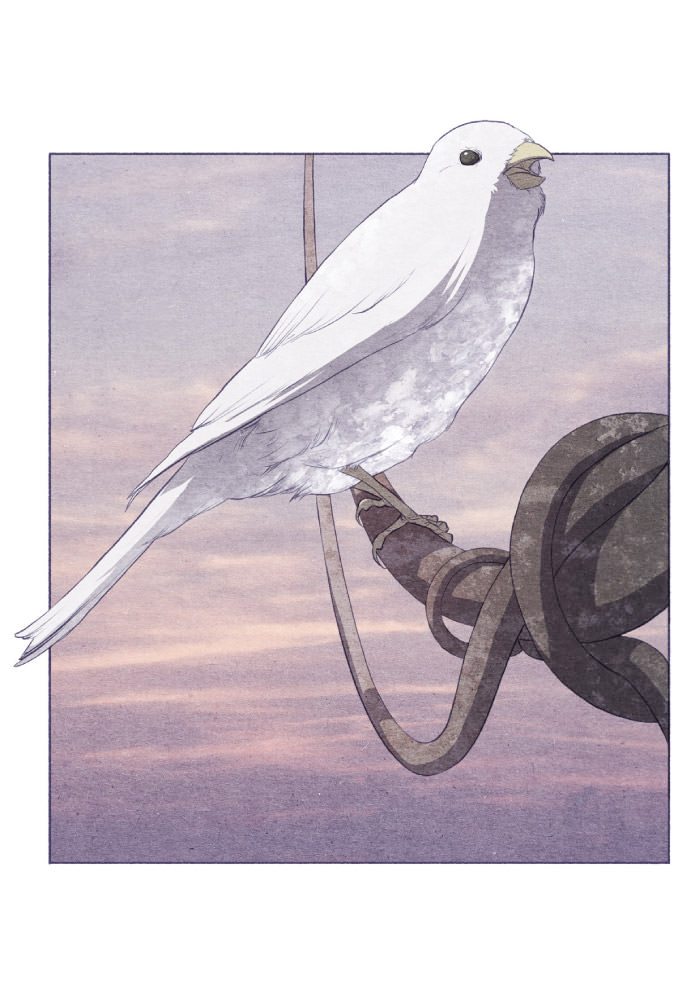
The rising CO2 level in the exhibition turns the canaries into an ecological warning system: “We hear the canary song subtly shift, as they sing an elegy for a changing planet”. With binoculars and the “Birdwatcher’s Guidebook to Singing Sentinels”, visitors were able to spot and identify these Specimens of Unnatural History. (Illustrations: Paul Duffield)
-
Search
-
FIND PRODUCTS
PRODUCT GROUP
- Building Materials
- Building Panels
- Building technology
- Façade
- Fittings
- Heating, Cooling, Ventilation
- Interior
- Roof
- Sanitary facilities
MANUFACTURER
- 3A Composites
- Alape
- Armstrong
- Caparol
- Eternit
- FSB
- Gira
- Hagemeister
- JUNG
- Kaldewei
- Lamberts
- Leicht
- Solarlux
- Steininger Designers
- Stiebel Eltron
- Velux
- Warema
- Wilkhahn
-
Follow Us
Tumblr
New and existing Tumblr users can connect with uncube and share our visual diary.
»Tradition is a dare for innovation.«
Alvaro Siza
Keyboard Shortcuts
- Supermenu
- Skip Articles
- Turn Pages
- Contents
